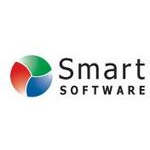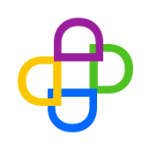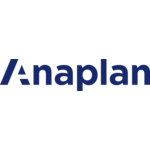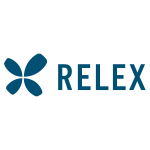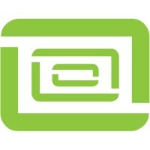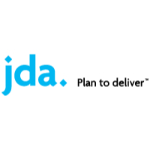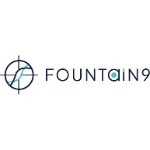TechnologyCounter provides genuine, unbiased real user reviews to help buyers make informed decisions. We may earn a referral fee when you purchase through our links, at no extra cost to you.
List of 15 Best Demand Planning Software
Showing 1 - 15 of 21 productsSmart Demand Planner, the innovative software designed to revolutionize demand forecasting for businesses of all sizes. With its advanced algorithms and user-friendly interface, this powerful tool streamlines the planning process, helping companies m...Read Smart Demand Planner Reviews
Demand is a and innovative software designed to revolutionize the way businesses manage their sales and inventory. With its advanced features and user-friendly interface, Demand seamlessly integrates data and processes to help companies meet increasi...Read Demand Reviews
Arkieva Supply Planner is a software designed to streamline your supply chain planning process. From forecasting and demand planning to inventory optimization and scenario analysis, Arkieva Supply Planner offers a comprehensive solution to help busin...Read Arkieva Supply Planner Reviews
Anaplan is revolutionizing the way businesses plan and make decisions, leaving traditional methods in the dust. With its innovative platform, Anaplan empowers organizations of all sizes to streamline their planning processes, collaborate effectively,...Read Anaplan Reviews
RELEX is a software designed to revolutionize the way businesses manage their supply chain and logistics. With its advanced features and user-friendly interface, RELEX helps streamline operations, optimize inventory levels, and boost overall efficien...Read RELEX Reviews
Logility SCM the ultimate supply chain management solution designed to streamline and optimize your entire supply chain operations. With advanced technology tools, Logility SCM enables efficient planning, forecasting, and execution, allowing business...Read Logility SCM Reviews
Solvoyo is a software that revolutionizes the world of supply chain planning. With its advanced optimization algorithms interface, Solvoyo empowers businesses of all sizes to streamline their supply chain operations and make data-driven decisions. De...Read Solvoyo Reviews
JDA SCM, a powerful supply chain management software designed to optimize and streamline your business operations. With innovative features technology, JDA SCM helps you stay ahead in the dynamic world of supply chain management. Say goodbye to the c...Read JDA SCM Reviews
CyberPlan is a state-of-the-art software that revolutionizes the way businesses plan and execute their operations. With its intuitive interface features, CyberPlan streamlines processes and maximizes efficiency, giving businesses a competitive edge i...Read CyberPlan Reviews
GMDH Streamline is an advanced software designed to streamline your businesss processes and improve overall efficiency. With powerful algorithms and user-friendly interface, GMDH Streamline offers simplified and effective solutions for inventory fore...Read GMDH Streamline Reviews
Kronoscopeis a latest software designed to revolutionize your time tracking experience. With its user-friendly interface features, Kronoscope is here to make time management hassle-free is a for professionals. Get ready to accomplish more with Kronos...Read Kronoscope Reviews
O9 Solv is a solution for your businesss needs. With advanced features and user-friendly interface, O9 Solv streamlines complex processes, increasing efficiency and productivity. Say goodbye to tedious tasks and hello to seamless operations. Its time...Read o9 Solv Reviews
ABCstock, your go-to solution for all your stock management needs. Our innovative software offers a comprehensive approach to streamline your inventory processes, helping you save time, increase efficiency, and boost profitability. With ABCstock, you...Read ABCstock Reviews
Flowlity is a is a solution for supply chain management. Designed to streamline operations and optimize inventory management, Flowlity offers unparalleled visibility and control for businesses of all sizes. With its user-friendly interface and intell...Read Flowlity Reviews
Kinaxis a leading software company that optimizes supply chain processes for businesses worldwide. With a focus on efficiency and accuracy, Kinaxis empowers organizations to make informed decisions and drive effective planning. Trusted by top compani...Read Kinaxis Reviews
- What Is Demand Planning Software?
- Top Reasons Why Businesses Need Demand Planning Software?
- What Are the Top Key Features of Demand Planning Software?
- What Are the Top Benefits of Demand Planning Software?
- What Are the Steps to Choose the Right Demand Planning Software?
- What Are the Types of Demand Planning Software for Different Industries?
- What Are the Technology Trends for Best Demand Planning Software?
- What Are the Deployment Options for Demand Planning Software?
What Is Demand Planning Software?
Demand planning software is a kind of enterprise software that facilitates firms in gaining a deeper comprehension of consumer demand and enhancing their ability to forecast it accurately.
The demand planning system facilitates the collection, monitoring, and analysis of data pertaining to customers and markets, so allowing firms to acquire valuable insights into patterns and trends in client demand. By comprehending these patterns, organizations can enhance their ability to strategically plan and distribute resources, resulting in a more streamlined operational process and improved capacity to effectively cater to client demands.
The best demand planning software effectively gathers data from many sources, including but not limited to client ordering habits, historical sales data, economic indicators, and customer surveys.
Subsequently, the collected data undergoes analysis using algorithms capable of identifying fluctuations in client demand, enabling organizations to make necessary adaptations to their supply chain operations. Organizations can leverage this data to construct predictive models that anticipate forthcoming customer demand and formulate plans to effectively address such need.
In general, best demand planning tools facilitate the enhancement of firms' capabilities to fulfill client expectations, hence enabling a more streamlined and economically advantageous operation.
By comprehending client demand and making predictions about it, firms may effectively ensure the alignment of appropriate resources and strategies. This enables organizations to enhance their competitive advantage in the marketplace and deliver an enhanced client experience.
Top Reasons Why Businesses Need Demand Planning Software?
1. Improve inventory planning and forecasting accuracy: The proposed approach involves the automated integration of sales and operational data to effectively strategize, forecast, and approximate forthcoming demand by leveraging past data.
2. Increased visibility: The best demand planning software provides users with the ability to obtain comprehensive knowledge of both present and future sales patterns, as well as valuable insights derived from projections and strategic plans.
3. Improved collaboration: Enhance the efficiency of communication and collaboration among various departments inside an organization, as well as with external stakeholders, including suppliers.
4. Better customer service: Utilize forecasting methodologies to discern and anticipate client requirements and preferences, hence enhancing overall customer contentment.
5. Maximize resources: Efficiently allocate resources to ensure the optimal maintenance and optimization of both the number and quality of products and services.
6. Maximize revenue: To enhance sales performance, best demand planning systems is crucial to gain insights into customers' purchasing behavior and utilize this information strategically to exploit prospective business prospects.
7. Reduced inventory costs: One potential strategy to achieve cost reduction is through the use of inventory management practices aimed at minimizing overstocks and the elimination of unnecessary expenditures.
8. Minimized risk: Minimize the potential hazards linked to demand forecasting through the acquisition of precise and current data.
9. Reduced lead times: To reduce lead times, it is essential to make accurate predictions of consumer demand and make corresponding adjustments to ordering levels.
10. Optimized supply chain: Enhance the efficiency and cost-effectiveness of the supply chain through effective management of shipment, delivery, and procurement procedures.
11. Improved planning accuracy: To ensure precise planning and budgeting, forecasts are consistently maintained and updated.
12. Improved forecasting capabilities: Employ sophisticated algorithms to enhance understanding of future demand and mitigate inaccuracies in forecasting.
13. Increased marketing effectiveness: Enhanced predictive capabilities facilitate businesses in effectively strategizing and efficiently allocating marketing resources.
14. Transparent demand cycle: Enhance the perceptibility of demand cycles and trends in order to facilitate prompt responsiveness by enterprises.
15. Automated planning and forecasting: The generation of precise sales estimates and strategies is facilitated through the automated utilization of current and historical data.
What Are the Top Key Features of Demand Planning Software?
The top key features of demand planning software include:
1. Forecasting: Demand planning software is capable of effectively generating precise projections by utilizing historical sales data to properly anticipate future demand.
2. Inventory Management: The best demand planning systems possesses the ability to rapidly ascertain the goods that require restocking and afterward make well-informed determinations regarding the replenishment of inventories.
3. Data Analysis: The tool facilitates the examination of prevailing market conditions, demand patterns, and potential client requirements, hence enabling the development of impactful marketing strategies.
4. Automated Reports: The best demand planning tools offers automated reports that deliver up-to-date insights and analysis. In this manner, individuals are able to make prompt decisions regarding the most effective marketing techniques for their products or services.
5. Collaboration Support: The provision of collaboration assistance enables users to engage in interactions with other departments or stakeholders inside the firm, hence facilitating improved decision-making processes.
6. Scalability: The scalability of the best demand planning software allows for seamless expansion and adaptation to accommodate the evolving needs and growth of a firm.
7. Visual Reporting: The demand planning system facilitates the generation of visually engaging graphical reports, which may afterward be leveraged to enhance strategic planning endeavors.
8. Integration: Finally, the integration of demand planning software allows users to establish seamless connections with other planning and accounting systems, hence facilitating enhanced data analysis capabilities.
What Are the Top Benefits of Demand Planning Software?
1. Increased Accuracy: The utilization of demand planning software facilitates enhanced precision in forecasting and the acquisition of valuable insights, hence playing a pivotal role in the optimization of demand planning strategies.
2. Improved Visibility: The utilization of a demand planning system enhances the level of insight into demand forecasting and inventory performance, hence facilitating enhanced decision-making processes within a business context.
3. Optimized Sourcing: The utilization of the best demand planning software enables the optimization of supply chain sourcing and manufacturing schedules, hence ensuring the punctual delivery of goods.
4. Reduced Inventory Costs: Top demand planning software has the capability to effectively manage inventory by tracking demand and implementing proactive measures. This can result in a reduction of inventory expenses.
5. Improved Efficiency: The implementation of automation in essential demand planning tasks facilitates the reduction of manual labor and enhances operational efficiency.
6. Forecast Scenario Modeling: The utilization of a demand planning system enables firms to engage in scenario simulation, hence facilitating strategic adjustments and the identification of potential areas for growth and improvement.
7. Automated Analytics: The best demand planning systems possesses sophisticated data analysis capabilities that enable it to generate valuable insights and analytics pertaining to demand forecasting and inventory management.
8. Improved Collaboration: The utilization of top demand planning software facilitates enhanced collaboration among stakeholders through the provision of a consolidated platform.
What Are the Steps to Choose the Right Demand Planning Software?
1. Identify your needs and goals: Initially, it is vital to establish a clear delineation of one's requirements and objectives pertaining to the best demand planning software. One should take into consideration the desired outcomes, such as the improvement of forecasting accuracy, enhanced responsiveness, and better accuracy in predicting client demand.
Developing a comprehensive outline of one's criteria and goals might facilitate the process of narrowing down the search and ascertaining the most suitable software solution.
2. Compare software features: After the identification of objectives and goals, it is advisable to conduct a thorough evaluation of various top demand planning software solutions, comparing their respective features and benefits.
Seek out systems that provide features such as the ability to upload datasets and conduct simulations, forecasting functionality, reporting and analytics capabilities, as well as alternatives for optimizing inventories.
Requesting demonstrations or trials can provide a more comprehensive comprehension of the software's efficacy in facilitating the achievement of one's objectives.
3. Assess the vendor: Evaluating demand planning providers is crucial, encompassing an assessment of their software capabilities alongside their standing inside the business.
The best demand planning systems is advisable to engage in a thorough examination of vendor background by perusing evaluations, engaging in conversations with customers, and dedicating sufficient time to the investigative process.
4. Compare pricing: The consideration of pricing is a significant factor in the selection process of an appropriate demand planning system. It is imperative to do a thorough comparison of pricing plans among different software providers in order to select the most suitable option that aligns with one's requirements and provides optimal value for the investment made.
5. Evaluate the implementation process: Prior to acquiring a demand planning software solution, it is vital to possess a comprehensive understanding of the installation procedure and associated schedule.
The aforementioned procedure may need a significant amount of time, hence it is imperative to carefully choose a vendor that can provide a seamless transfer and ongoing assistance.
What Are the Types of Demand Planning Software for Different Industries?
There are various types of best demand planning tools for different industries that can be tailored to specific needs. These include the following:
1. Inventory management software: The utilization of this program facilitates the acceleration of the procedure involved in documenting, overseeing, scrutinizing, and predicting the quantities of inventory.
The employment of a demand planning system allows firms to enhance their comprehension of existing stock levels and patterns in demand. Consequently, it may be employed to optimize stock utilization and provide a more precise reflection of demand levels.
2. Supply chain planning software: This software has the capability to assist firms in effectively managing and optimizing intricate supply-chain networks. Supply chain management plays a crucial role in facilitating the seamless movement of commodities from their point of origin to their final destination.
By effectively managing this process, organizations can achieve cost reduction and gain valuable insights into their inventory requirements.
3. Retail planning software: Retail planning software facilitates the anticipation of consumer demand within enterprises. The application employs predictive analytics and machine learning techniques to comprehend customer preferences, purchasing patterns, and historical consumer behavior in order to make precise predictions about future demand.
4. Financial planning software: This program facilitates the budgeting and forecasting process, allowing financial planning teams to make precise predictions regarding cash flow requirements and budget plans. Additionally, it can be beneficial to offer comprehensive financial transparency regarding patterns of demand and projections.
5. Production planning software: The demand planning system facilitates the process of designing an effective production schedule for enterprises. This tool has the capability to ascertain production volumes, as well as predict capacity and inventory requirements.
What Are the Technology Trends for Best Demand Planning Software?
1. The current technology advancements in demand planning software revolve around the utilization of data-driven insights to facilitate predictive and proactive planning.
2. The utilization of machine learning and artificial intelligence is employed to predict demand and enhance inventory management choices.
3. Furthermore, the utilization of cloud platforms is experiencing a growing trend in the adoption of best demand planning systems due to their capacity for data integration and efficient interdepartmental cooperation.
4. Cloud-hosted solutions also enable the utilization of integrated software applications for the purpose of demand forecasting and inventory optimization.
5. The advent of the Internet of Things (IoT) has facilitated the collection of product demand data from multiple touchpoints, enabling the utilization of predictive analytics for demand planning purposes.
What Are the Deployment Options for Demand Planning Software?
The deployment options for demand planning software include:
1. On-premise: The program is deployed on the organization's internal computing infrastructure, including computers, servers, and other hardware owned by the enterprise. This enables the organization to enhance its management over software reporting, data storage, and security measures.
2. Cloud-based: The program is deployed on distant servers, and the organization accesses the software through the internet. Typically, opting for this solution is both cost-effective and easy, as it eliminates the need for the organization to maintain its own hardware infrastructure.
3. Hybrid deployment: The deployment method utilized in this case is a hybrid approach, incorporating both on-premise and cloud-based components. The organization derives advantages from the adaptability of cloud-based deployment, while concurrently retaining authority over certain aspects of the program.
